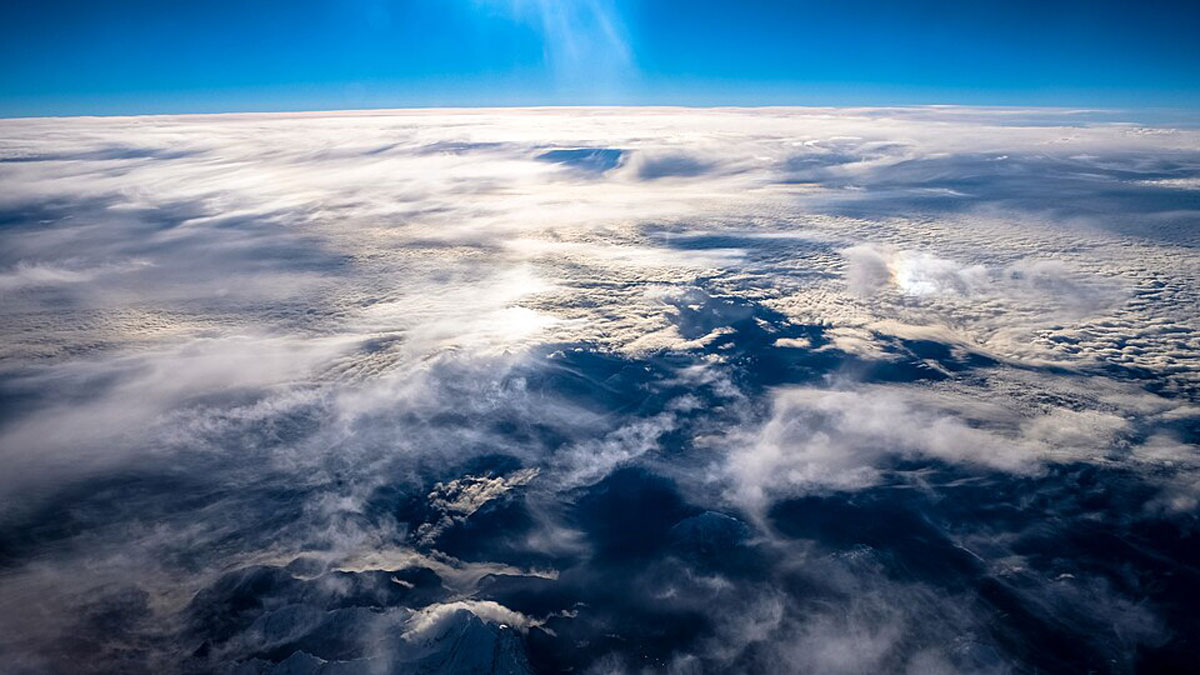Years ago, scientists noted something odd: Earth’s Northern and Southern Hemispheres reflect nearly the same amount of sunlight back into space. The reason why this symmetry is odd is because the Northern Hemisphere has more land, cities, pollution, and industrial aerosols. All those things should lead to a higher albedo—more sunlight reflected than absorbed. The Southern Hemisphere is mostly ocean, which is darker and absorbs more sunlight.
New satellite data, however, suggest that symmetry is breaking.
From Balance to Imbalance
In a new study published in the Proceedings of the National Academy of Sciences of the United States of America, Norman Loeb, a climate scientist at NASA’s Langley Research Center, and colleagues analyzed 24 years of observations from NASA’s Clouds and the Earth’s Radiant Energy System (CERES) mission.
They found that the Northern Hemisphere is darkening faster than the Southern Hemisphere. In other words, it’s absorbing more sunlight. That shift may alter weather patterns, rainfall, and the planet’s overall climate in the decades ahead.
Since 2000, CERES has recorded how much sunlight is absorbed and reflected, as well as how much infrared (longwave) radiation escapes back to space. Loeb used these measurements to analyze how Earth’s energy balance changed between 2001 and 2024. The energy balance tells scientists whether the planet is absorbing more energy than it releases and how that difference varies between hemispheres.
“Any object in the universe has a way to maintain equilibrium by receiving energy and giving off energy. That’s the fundamental law governing everything in the universe,” said Zhanqing Li, a climate scientist at the University of Maryland who was not part of the study. “The Earth maintains equilibrium by exchanging energy between the Sun and the Earth’s emitted longwave radiation.”
The team found that the Northern Hemisphere is absorbing about 0.34 watt more solar energy per square meter per decade than the Southern Hemisphere. “This difference doesn’t sound like much, but over the whole planet, that’s a huge number,” said Li.
Results pointed to three main reasons for the Northern Hemisphere darkening: melting snow and ice, declining air pollution, and rising water vapor.
To figure out what was driving this imbalance, the scientists applied a technique called partial radiative perturbation (PRP) analysis. The PRP method separates the influence of factors such as clouds, aerosols, surface brightness, and water vapor from calculations of how much sunlight each hemisphere absorbs.
The results pointed to three main reasons for the Northern Hemisphere darkening: melting snow and ice, declining air pollution, and rising water vapor.
“It made a lot of sense,” Loeb said. “The Northern Hemisphere’s surface is getting darker because snow and ice are melting. That exposes the land and ocean underneath. And pollution has gone down in places like China, the U.S., and Europe. It means there are fewer aerosols in the air to reflect sunlight. In the Southern Hemisphere, it’s the opposite.”
“Because the north is warming faster, it also holds more water vapor,” Loeb continued. “Water vapor doesn’t reflect sunlight, it absorbs it. That’s another reason the Northern Hemisphere is taking in more heat.”
Curiosity About Cloud Cover
One of the study’s interesting findings is what didn’t change over the past 20 years: cloud cover.
“The clouds are a puzzle to me because of this hemispheric symmetry,” Loeb said. “We kind of questioned whether this was a fundamental property of the climate system. If it were, the clouds should compensate. You should see more cloud reflection in the Northern Hemisphere relative to the Southern Hemisphere, but we weren’t seeing that.”
Loeb worked with models to understand these clouds.
“We are unsure about the clouds,” said Loeb.
“Understanding aerosol and cloud interactions is still a major challenge,” agreed Li. “Clouds remain the dominant factor adjusting our energy balance,” he said. “It’s very important.”
Still, Li said that “Dr. Norman Loeb’s study shows that not only does [the asymmetry] exist, but it’s important enough to worry about what’s behind it.”
Loeb is “excited about the new climate models coming out soon” and how they will further his work. “It’ll be interesting to revisit this question with the latest and greatest models.”
—Larissa G. Capella (@CapellaLarissa), Science Writer

